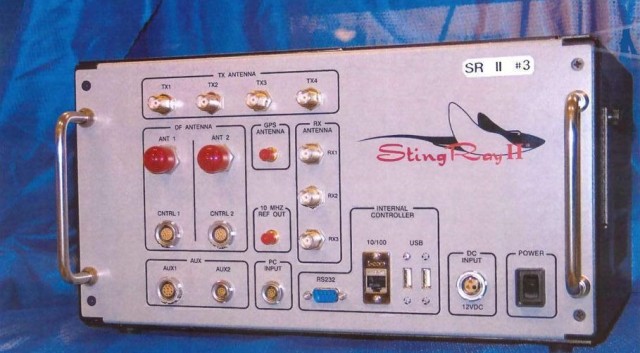Baltimore Police continue to attract attention for their heavy use of cell site simulator devices that track the location of suspects’ cellphones — and collect data from others who just happen to be in the area.
On Monday, a lengthy report in USA Today spotlights Baltimore’s police as “prolific stingray users,” referring to the common name for the devices. The paper obtained logs confirming that the devices were used in 837 cases. While more than a quarter of those cases where the device was used were to solve major crimes like murders, shootings and rapes, the paper also found that stingrays were used to track down a woman who stole credit cards, and even to find a husband who stole his wife’s cellphone.
Read the full story
Civil liberties advocates like the ACLU and Electronic Frontier Foundation have raised concerns about the technology because it tracks cellphone data within a wide radius. The device acts like a cellphone tower, intercepting data from all of the cellphones in the radius of roughly a city block.
Nationally, information about police departments’ use of the stingray has been spotty because police officials in cities like Baltimore signed a nondisclosure agreement with the FBI. According to the USA Today report, police are also cagey about how they talk about stingrays in police reports. From the report:
In court records, police routinely described the phone surveillance in vague terms — if they mentioned it at all. In some cases, officers said only that they used “advanced directional finding equipment” or “sophisticated electronic equipment” to find a suspect. In others, the police merely said they had “located” a suspect’s phone without describing how, or they suggested they happened to be in the right place at the right time.
Such omissions are deliberate, said an officer assigned to the department’s Advanced Technical Team, which conducts the surveillance. When investigators write their reports, “they try to make it seem like we weren’t there,” the officer said.
As a result, public defenders told the paper, lawyers have a hard time arguing against the use of stingrays in court because they don’t know whether they were actually used. And it could have been used many, many times.
When a BPD detective finally had to testify about the stingray back in April, he said police used it 4,300 times in eight years.
Join the conversation!
Find news, events, jobs and people who share your interests on Technical.ly's open community Slack

Baltimore daily roundup: An HBCU innovation champion's journey; Sen. Sanders visits Morgan State; Humane Ai review debate

Baltimore daily roundup: Medtech made in Baltimore; Sen. Sanders visits Morgan State; Humane Ai review debate

Baltimore daily roundup: The city's new esports lab; a conference in Wilmington; GBC reports $4B of economic activity


